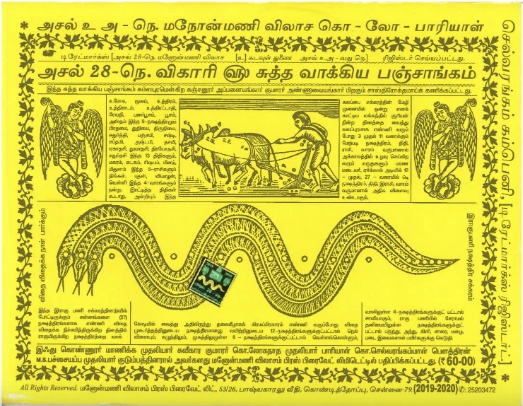The Hindu calendar system is an ancient and complex system that has been used for centuries to determine auspicious timings for various events and rituals. Today Panchang is a vital tool in this system, providing detailed information on celestial events, lunar phases, and planetary positions. For those who follow the Hindu faith, a Panchang is an essential tool for planning their day, ensuring that all events and rituals are performed at the most auspicious time.
Understanding the Panchang
The Panchang is a calendar that comprises five parts, namely Tithi, Vaar, Nakshatra, Yoga, and Karana. Each of these five parts represents a different aspect of the Hindu calendar system and is used to calculate auspicious timings for various events. By understanding the significance of each of these five parts, one can determine the most auspicious time for any given event.
Tithi
The Tithi is the lunar day and is the most critical component of the Panchang. It is based on the phases of the moon and is calculated based on the distance between the sun and the moon. Each Tithi has its own significance and is associated with various rituals and ceremonies. The Tithi is used to determine the best time to start a new project or make an important decision.
Vaar
Vaar refers to the day of the week and is based on the position of the moon. The Hindu calendar system follows a seven-day week, with each day named after a celestial body. Each day has its own significance, and many rituals and ceremonies are performed on specific days. Vaar is used to determine the most auspicious day for various events.
Nakshatra
Nakshatra refers to the constellation or star sign that the moon is positioned in on a specific day. There are 27 Nakshatras in total, with each Nakshatra having its own unique characteristics. The position of the moon in a particular Nakshatra is said to influence the energy and mood of that day. Nakshatra is used to determine the most auspicious time for a marriage or other significant event.
Yoga
Yoga refers to the relationship between the sun and the moon and is used to determine auspicious timings for various events. There are 27 Yogas in total, with each Yoga having its own unique characteristics. The position of the moon in a particular Yoga is said to have a significant influence on the energy and mood of that day. Yoga is used to determine the most auspicious time for various events.
Karana
Karana refers to the half of the Tithi and is used to determine auspicious timings for various events. There are 11 Karanas in total, with each Karana having its own unique characteristics. The position of the moon in a particular Karana is said to have a significant influence on the energy and mood of that day. Karana is used to determine the most auspicious time for various events.
Using the Panchang to Plan Your Day
By understanding the significance of each of the five parts of the Panchang, one can determine the most auspicious time for any given event. For example, if one wants to start a new business, they should look for a Tithi that is conducive to new beginnings. If one wants to get married, they should look for a Nakshatra that is conducive to marriage. If one wants to perform a puja, they should look for a Vaar that is conducive to worship.
It is important to note that the Panchang is not just used for religious events but can be used for everyday activities as well. For example, if one wants to schedule a job interview, they should look for a Vaar.


No comments yet